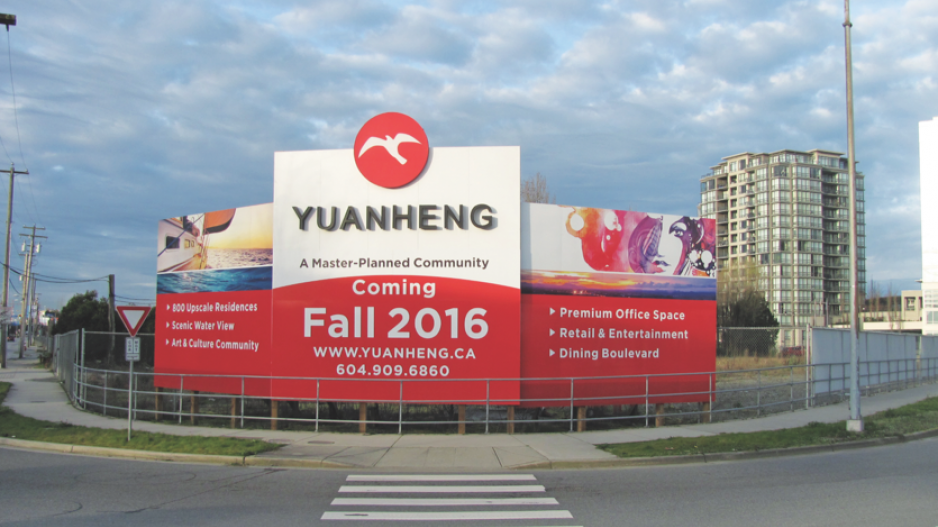Fringe uses
Spring has long been a time for pilgrimages, at least as far back as Chaucer’s day, so a recent weekend found this columnist hiking east up the North Arm of the Fraser River in pursuit of Vancouver real estate’s holy grail: industrial land.
TransLink’s network of walkways and green space from Gladstone Park through Wesgroup’s East Fraserlands project to Burnaby Fraser Foreshore Park underscored the shift from heavy industry to lighter uses ranging from logistics to residential.
While billboards proclaim Yuanheng’s ambitious plans to remake the Capstan Village area of Richmond (“800 Upscale Residences … A Master-Planned Community Coming Fall 2016”), over in Burnaby’s Big Bend area Oxford Properties Group is redeveloping the former Norampac mill site with distribution space.
The change in uses has effectively pushed the region’s gritty industrial uses – so far as they still exist – south of the Fraser.
Port Metro Vancouver considers Delta ideal for new port facilities while the South Fraser Perimeter Road connects them to warehouses in North Delta, Surrey and the Fraser Valley.
“The ongoing eastward migration of industrial activity,” reports Avison Young, “resulted in the area becoming Metro Vancouver’s dominant industrial region … in 2015.”
A total of 214 deals worth $391 million closed here in 2015, easily trumping the 2012 record of $297 million, while the next 12 months will see a steady stream of projects complete. A ready supply of land here is driving speculation that Molson Coors could locate a new brewery – replacing the old plant in False Creek – south of the Fraser, too.
The premium on river frontage as a place for people to live, work and play – or, in the case of New Westminster craft brewer Steel & Oak, serve up the suds that refresh weary urban hikers – means that Oxford’s purchase of the Norampac site in 2011 is emblematic of what’s taking place across the region.
Steel & Oak, nestled near New West’s Quayside rail tracks, is a genteel echo of the region’s industrial past, while heavier industrial users look away from the river and elsewhere for parcels that make sense economically as well as logistically.
As the Beedie Group’s Todd Yuen noted following Oxford’s purchase of the strategic Norampac site, “it forces us to be more reactive and more responsive in land acquisitions.”
Federal action
The transition to a gentler, post-industrial era (notwithstanding the Metro Vancouver incinerator that marks the end of the waterfront trail in Burnaby) received a boost in the recent federal budget.
The feel-good document dedicated to “growing the middle class” pledged billions for infrastructure, in many cases building on the work of the previous Conservative government.
However, it also charted a cleaner, greener future with a promise of $3.4 billion in cash over the next five years “to maintain and upgrade federal infrastructure assets such as national parks, small craft harbours, federal airports and border infrastructure.” That’s good news for importers and exporters, but the funding also includes $217 million to remediate contaminated sites across the country.
Details have yet to come, but combined with allocations to trail networks and retrofits aimed at the “greening of government operations,” infrastructure development in B.C. seems destined to have a green hue as traditional industrial uses are relegated to the past – or, at least, greenfield sites far from the region’s urban core. •




